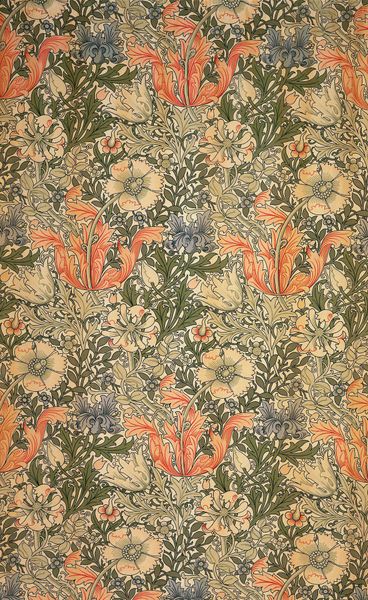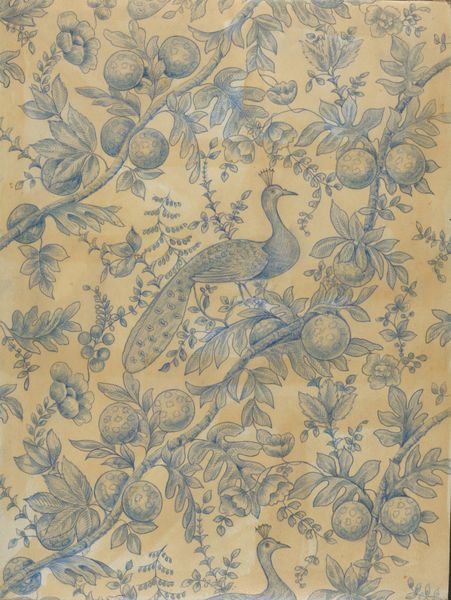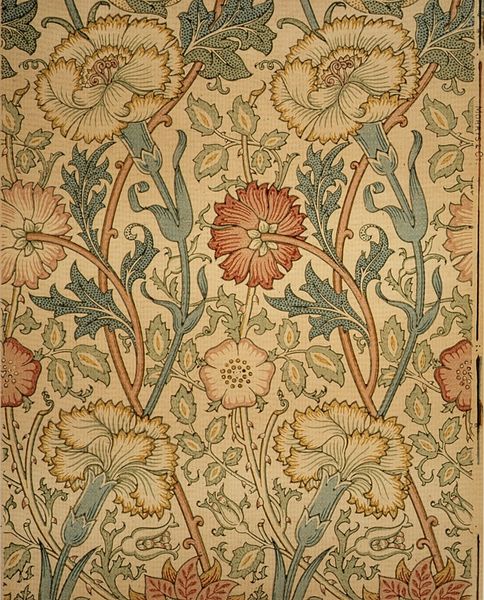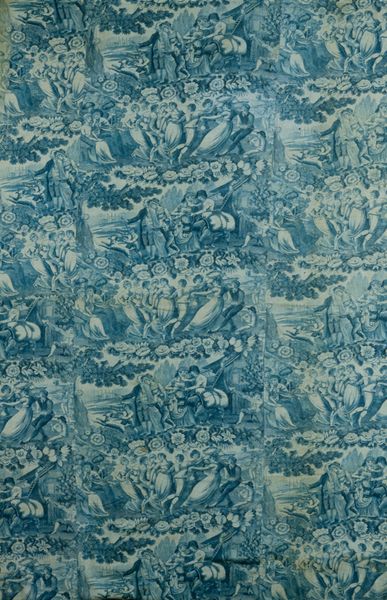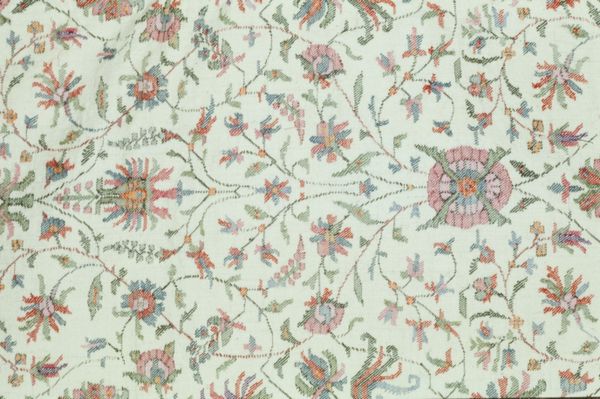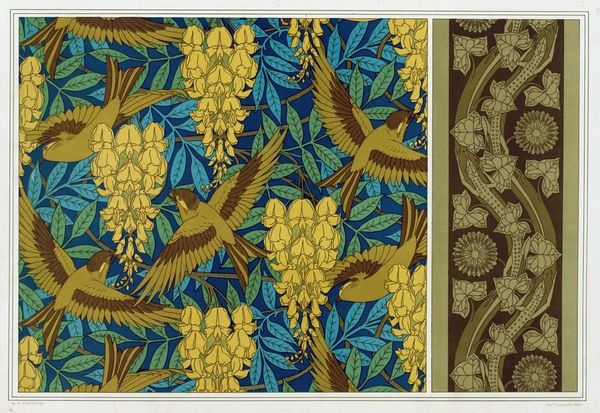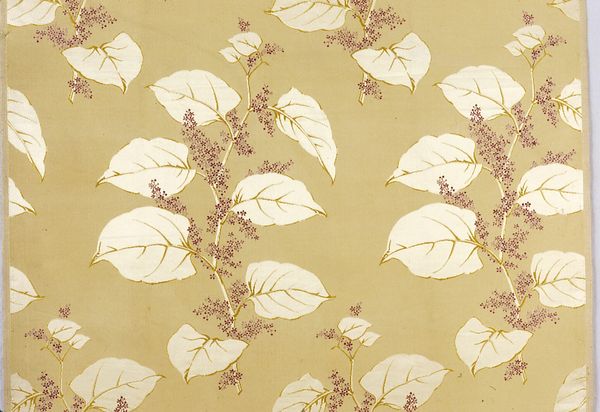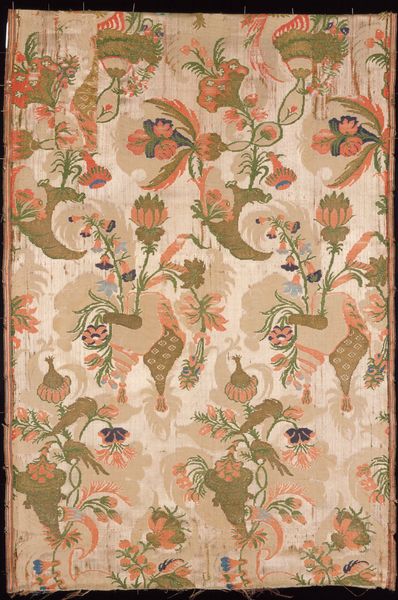
Copyright: Public domain
Editor: This is the "Acanthus wallpaper," created in 1875 by William Morris. The paper medium makes this artwork very intimate. It's intricate, but the muted colours make me feel calm. How do you interpret the repetition and the natural forms within this piece? Curator: I would focus on the masterful deployment of line and form. Notice the interlocking network of acanthus leaves, creating a rhythmic, almost hypnotic, visual experience. Consider the interplay between positive and negative space, the curling tendrils defined as much by what they are as by what they are not. The colour palette, restrained as it is, offers subtle modulations of light and shadow. Editor: It's true. The swirling forms feel quite dynamic even though the colours are very uniform. Did Morris intend any inherent contrast between these visual features? Curator: Precisely. The artist deliberately constructed a complex interplay. How do line, form, and color contribute to or challenge the work's overarching unity? The density also influences one's understanding, creating both complexity and order. Editor: This close reading highlights how much a formal analysis reveals about what might be missed in a simple viewing. I can see there's more to patterns than initially meets the eye! Curator: Indeed. A careful deconstruction can illuminate how such elements can evoke something far beyond surface-level comprehension, providing both aesthetic pleasure and an intellectual reward.
Comments
No comments
Be the first to comment and join the conversation on the ultimate creative platform.

